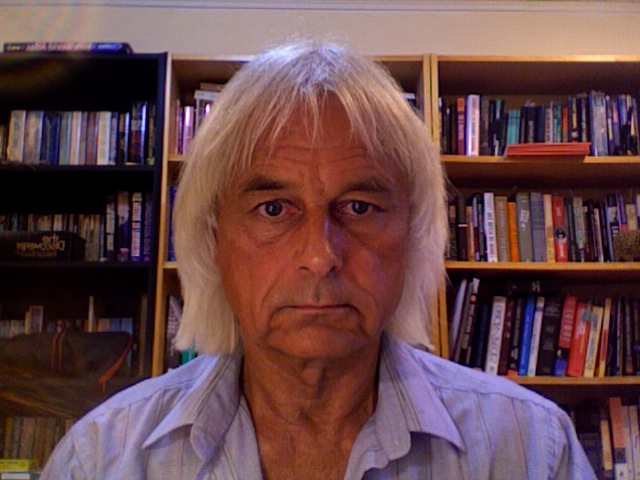Last week Rob Kall published an OpEd News article,
"More versus Enough-- time to re-set our values". Rob argued
that our mindless pursuit of "more" has become like a mental illness,
an inability to impose rational healthy constraints on a self-destructive
mindset of infinite materialism at the expense of all other human values. Some
commenters noted the similarity of this unlimited growth mentality with cancer
that grows until it kills its host, and itself.
Many years ago I talked to the "amazing fat man" at a circus. He said he should actually be called "giant" man because he had a condition known as gigantism where his body doesn't stop growing. At about 1000 pounds, all he could do was sit there and display himself as a freak. He saw his condition as a disease that grossly restricted his life options, not as a benefit that made him "bigger and better". Unlimited material growth is a disease to be avoided or cured, not a value to be desired and pursued.
Industrialization has enabled humanity to become economic giants, consuming vast resources and leaving vast waste in our wake. We are killing our host planet, and we seem incapable of changing the values system that drives us to mindlessly pursue more as individuals and as a civilization. In a comment to Rob's article I pointed out that there is a perverse monetary phenomenon that makes endless growth an arithmetic necessity of our bank-issued money system, and our capitalist production and distribution system.
***{At least one commenter didn't believe that commercial banks issue our money supply, so I will try to clearly explain the basic facts of our money and banking system in a separate article, "Why most people can't believe the truth about money"}
Our Bank-Issued Money System
Banks create virtually all of the money supply by making loans of newly created bank deposits, at interest. Money is created and loaned by banks, then the new money is spent/invested into the economy by borrowers. Money that one person spends is money that is simultaneously earned by people who sell stuff (labor, services, land, resources, goods, etc.) to the spender/investor. Money that is earned can be saved, invested, or spent, by the earner. But that money is still owed as a bank loan repayment by the original borrower/spender of the new money.
One person cannot have earnings and savings unless some other person has unpaid debt owed to a bank. Banks do not lend out their depositors' savings. Every bank loan is the creation of new bank deposits: new money ... and new debt. Money that is saved is removed from circulation in the economy. Unless the saved money is spent by the savers, the people who originally borrowed (from banks) and spent that money into the economy, cannot earn their money back out of the economy and use it to repay their bank loans. Unless earners spend their earnings, debtors cannot earn the money back to repay their debts.
{This is where many people's minds balk at recognizing the perverse truth of our bank-debt money system. People believe that saving their earned money is "good", and they do not understand fallacies of composition so they cannot believe that doing what is good individually can have "bad" effects on the money system or the economy as a whole (this contradiction is one of the core perversities of our money system). So rather than believe the truth that banks create the money they lend, many choose to believe that banks lend out people's savings to recirculate the money in the economy, where debtors can earn that money back to repay their bank loans. But banks do not function as financial intermediaries who take deposits of previously existing money and lend the money out to investors. Banks function as the original issuers of our money. Bank creation of bank deposits to fund loans and to purchase government bonds is where the money supply "comes from" in the first place.}
"Money" is created, loaned, borrowed, spent, and earned, in the amount of loan principal. "Debt" (which is owed to the bank that created and loaned the money, not owed "to each other") is simultaneously created in the amount of principal plus interest.
The banking system, which is the economy's and the government's money-issuing system, creates principal amount of money, at the same time as it creates principal plus interest amount of debt. If money is positive $numbers and debt is negative $numbers, you can see that a system that issues all of the money supply as loans at interest is a negative sum system that systematically creates more negative numbers than positive numbers. Within this system, the only way to get additional money into circulation is by more bank lending at interest, which makes the total negative sum equation even worse, not better. If the government is borrowing and spending money, public debt increases and taxpayers are on the hook. If the private sector is borrowing and spending money, private debt increases and businesses and households are on the hook.
Even if earners spent all their earnings back into the economy and debtors earned all that money and used it to repay their bank debts, the bank-issued money system creates exactly enough money for all borrowers to repay all of their loan principal, with zero money left over to pay the interest. The interest amount remains as an unpayable "debt" that is owed to the banking system, even though no money exists to pay it. Or if some borrowers manage to pay both their principal plus interest, other borrowers will find themselves unable even to earn money to pay their loan principal. So, ultimately, they default en masse, rendering the banking system first illiquid due to a shortage of loan payments coming in, then insolvent when there is no longer enough demand money to liquidate the banks' collateral assets at credit-bubble inflated prices.
Our money-issuing system systematically issues more debt (owed to the banking system) than it issues money to pay the debt. So unless a continuous supply of new money is created, loaned/borrowed, and spent or invested into circulation where previous debtors can earn the new money to pay their old bank loans, the Ponzi arithmetic of the credit/debt money system collapses and we get mass defaults and banking system failure and "financial crisis" like 1929 and 2008.
The present US$ money system has been in operation since 1913. WWI was the system's first large scale government debt runup to finance the war effort, followed by the short sharp financial collapse of 1920-21, then the Roaring Twenties private sector debt and asset inflation bubble, then the 1929 financial collapse and Depression, then the truly massive government credit/debt expansion to finance WWII. Because the money is issued by banks as loans that are "debts" to the borrower/spender, money supply growth requires total debt growth. Debt reduction involves reduction in the money supply, which depresses assets and goods prices, which bankrupts banks and depresses production, buying and selling in the real economy.
If you look at a chart of total US$ debt growth since 1946 you will see a nice long exponential curve that starts its vertical rise during the 2000s real estate credit bubble and ends with the 2007-2008 collapse. We are still in the Depression of that collapse. Last time we were in this boat the brain trust decided a massive increase in government debt to finance a world war would be a good solution to the money problem.
(Note: You can view every article as one long page if you sign up as an Advocate Member, or higher).






